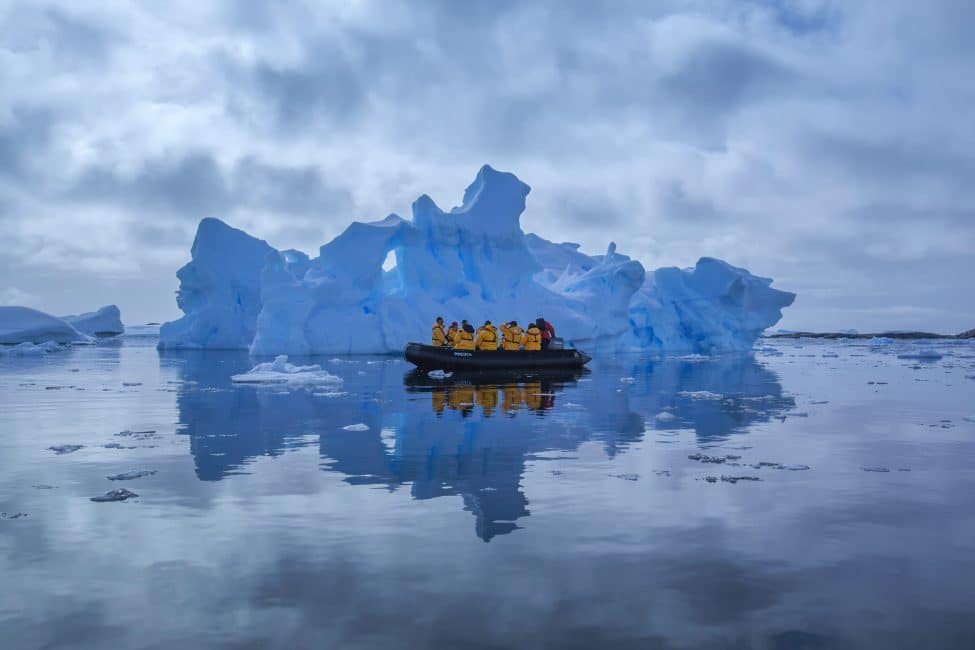Antarctica Photography: 8 Easy Tips and Tricks
Antarctica Cruise season is in full swing, and if you are one of the lucky few to check the 7th continent off your bucket list, you will want to create lasting memories of this trip of a lifetime. These Antarctica photography tips can help you capture stunning images.
Having witnessed the majesty of Antarctica, our photographs have been featured in various magazines, including the Lonely Planet and the Toronto Star. The unique environment poses challenges for photographers, but with the right strategies, you can return home with photos you’ll cherish forever.
Giant ZipLock Freezer Bags
This may seem like an odd tip, but using inexpensive ziplock bags can keep your camera gear safe from damage during your Antarctica Cruise.
Condensation can ruin cameras. After spending time outdoors, your camera may become too cold, making condensation a concern. I recommend using large ziplock bags to store your gear before returning to the ship. By sealing the camera in the bag and removing excess air, you allow it to warm up slowly without forming condensation.
Bring 2 Camera Bodies
The last thing you want to do is change lenses in freezing conditions.
Be prepared for any situation by mounting two lenses of choice on separate camera bodies, such as Canon 5D MKII and Canon Rebel T4i. This way, you can easily switch between capturing stunning landscapes and unexpected wildlife, such as whales or penguins.
Bracket Your Shots
Getting the right exposure in snowy locations can be tricky, as cameras often struggle with bright surfaces. To avoid the “grey snow” effect, bracket your exposures by taking 3 to 5 shots at intervals of 1 to 2 stops. Using your camera’s spot meter can help ensure accurate readings.
Think of Showing Scale
Incorporating elements like kayaks, people, or wildlife into your shots provides a sense of scale, enhancing the viewer’s experience. Including your ship or zodiac can also help convey the enormity of the surroundings.
Get Down Low to Photograph Penguins
Since you will encounter numerous penguins, finding unique angles can be rewarding. Get low and position the penguins against interesting backgrounds for compelling images. While long lenses are common, using a wide lens to incorporate more of the environment can create stunning shots.
Bring a Dry Bag
Protecting your gear from emerging weather conditions is crucial, especially in Antarctica. I once ventured out in sunny weather, only for it to suddenly snow and rain. A dry bag is essential for stowing your gear safely, complemented by an Op/Tech rain sleeve for extra precaution.
Know Your Settings
Before action begins, take test shots to ensure your camera settings are optimized for the environment. While on a zodiac, use shutter priority mode at 1/200th of a second or faster, then switch to aperture priority mode when on land. Knowing how to effectively use your camera in various situations will increase your chances of capturing remarkable images.
Bring Filters
It is advisable to carry two types of filters: a UV filter to shield your lens and a polarizing filter to reduce glare on water and enhance color saturation. However, exercise caution with polarizing filters, as improper use can lead to oversaturated skies and unrealistic images.
These Antarctica photography tips will not only help you capture exceptional images but also keep your camera secure amid unpredictable weather conditions. If you have any tips for polar travel photography, feel free to share them in the comments below.
Planning Resources for Antarctica
- Packing: How To Pack For An Antarctica Cruise
- Things to do: 11 Of The Best Things To Do In Antarctica
- Planning: Antarctic Expedition Explained – What To Do On Continent #7
- Adventure: Sea Kayak Antarctica – The Adventure Of A Lifetime
- Camping: Camping On Antarctica
- Polar Plunge: What It’s Like To Take The Polar Plunge In Antarctica
- Camera Gear: Camera Gear For Antarctica
Travel Planning Resources
Looking to plan your next adventure? Use these reliable resources to make your journey easier.
Flights: Start your trip planning by exploring the best flight deals on Skyscanner.
Hotels: For the best hotel prices, check Booking.com in Europe and TripAdvisor elsewhere.
Apartment Rentals: The cheapest apartment rentals can be found on VRBO.
Travel Insurance: Ensure safety with adequate travel insurance:
- Safety Wing – for occasional travelers.
- Medjet – global air medical transport and travel security.
Activities: For walking tours, private guides, and more, visit Get Your Guide.
Need more assistance planning your trip? Check out our Resources Page for trusted travel companies.




